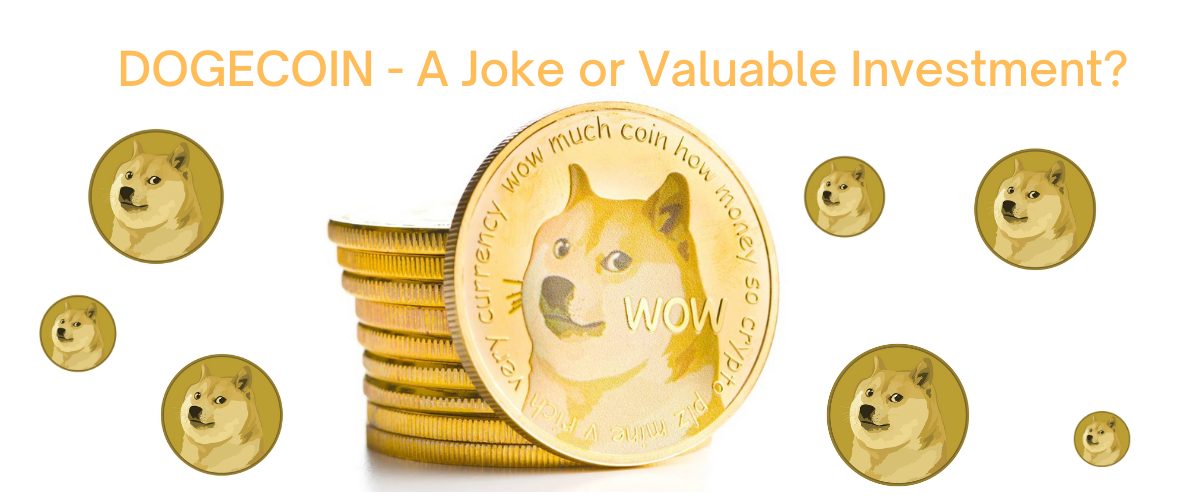Dogecoin, a new favorite cryptocurrency, has drawn a lot of attention recently because of its surge. The sky-high price triggers curiosity and investment from people, stirring up the market more than ever before. “What is Dogecoin?”, “How does it work?”, “Is it reliable?”, “why has it increased aggressively” are commonly asked questions surrounding this digital currency. This article will look at Dogecoin from multiple angles, based on the research and findings from Holland Fintech undercover team.
What is Dogecoin?
Dogecoin is a cryptocurrency created by software engineers Billy Markus and Jackson Palmer, who decided to create a payment system as a joke, making fun of the wild speculation in cryptocurrencies at the time. Much like Bitcoin, Dogecoin enables peer-to-peer transactions across a decentralized network and is accepted as a payment or tip by 1400 companies.
How does it work?
Like other cryptocurrencies, Dogecoin is run on blockchain technology.
People called miners use computers to solve complex mathematical equations in order to process transactions and record them on the Dogecoin blockchain - a so-called “proof of work” system. The proof-of-work system prevents users from having extra coins they didn’t earn, or double-spending. At the same time, it gives miners an incentive to support and secure the network by making it profitable to do so and making it unprofitable to attempt to hack the network.
In exchange for processing transactions and supporting the blockchain ledger, miners earn additional Dogecoin - freshly mined - which they can then hold or sell on the open market.
According to CNBC calculations, a $1,000 dogecoin purchase on Jan. 1, 2021, at a price of less than a cent per coin, would be worth $121,052 at the high of 69 cents, a gain of more than 12,000%. That’s significantly more than other cryptocurrencies like bitcoin and ethereum, which grew 95% and 369% over the same time period, respectively. A $1,000 bitcoin purchase would be worth $1,953.88, while ether would be worth $4,686.58.
The quick capitalization on the gains of Dogecoin triggers even more investments and ultimately, makes people believe in its true values. However, quickly-earned money is normally questioned for reliability, especially when investors consider securing their money for the future.
Let’s dive into the pros and cons of Dogecoin to have a smart plan for your investment!
Pro side of Dogecoin
1.It is a learning tool for people to get into cryptocurrency. The hype sparks interest and educates people about the trend that they may have never thought that they would invest in it.
2.It has a low entry barrier. Per Dogecoin costs about $0,60 so the investment is even cheaper than buying a lottery ticket
3.It could go even higher if many people believe in its value. Thus, making it interesting speculation.
4.It could be stabilized with more participation. There is a fact that Dogecoin is largely endorsed by celebrities and Elon Musk is one of them. These celebrities have substantial influence on their audience and will eventually make Dogecoin more popular by encouraging people to buy it, especially the new-to-crypto audience. When more people buy and sell this crypto, the price will become more stable since it is unaffected by the action of buying and selling
Downside of Dogecoin
1.Dogecoin is highly inflationary because it has no supply limit. Each minute, 10,000 Doge is added into the network. At this rate, miners add more than 5 billion coins per year. When too many coins are added, it will result in hyperinflation, meaning the value will get diluted and can’t be stored. It’s the same when the government prints too much cash, more money = less value per unit.
2.No utility and no real purpose. The aggressive increase in Dogecoin’s price is mostly caused by media attention and celebrities endorsements. The cryptocurrency has been released for 8 years but until today, Dogecoin hasn’t largely been adopted by companies in the market.
Elon Musk tweeted about Dogecoin: “Dogecoin might be my favorite cryptocurrency. It is pretty cool.”


3.Regulatory risk. There’s always the risk of further regulatory risk that a country will ban Dogecoin, or shut down the ability of large exchanges. There’s nothing really actually backing these currencies and that would cause problems for those who invest in it. For example, China already banned financial institutions and payment companies from providing services related to cryptocurrency transactions, and warned investors against speculative crypto trading.
4.Vulnerable network. According to Blockchair, Dogecoin only has 1090 nodes, which is a lot lower when compared to Bitcoin which has 10,000 nodes distributed across 97 countries. With such a low count of nodes, this makes it far more susceptible to a 51% attack. 51% attack occurs when a single cryptocurrency miner or group of miners gains control of more than 50% of a network’s blockchain. Dogecoin’s low number of nodes means that the cryptocurrency is concentrated in the hands of a few, which potentially leads to an 51% attack and as a result, would put holders at risk of losing all value.
In conclusion, Dogecoin’s price may potentially go up thanks to the bump from media attention and celebrities, as well as continuous investments and participation from people. It may bring a chance to earn quick money and get educated about cryptocurrency, but is risky for long-term investment due to high volatility and vulnerability.
Resources
- Dogecoin will migrate from proof-of-work to proof-of-stake to make it viable, predicts head of crypto lending platform
- Is Dogecoin really a safe investment?
- What is a 51% Attack?
- https://twitter.com/elonmusk/status/1395328697436033032/photo/1
- https://twitter.com/elonmusk/status/1113173498384441344/photo/1
- https://twitter.com/elonmusk/status/1357236825589432322/photo/1
- https://twitter.com/SnoopDogg/status/1358141965930426368/photo/1


